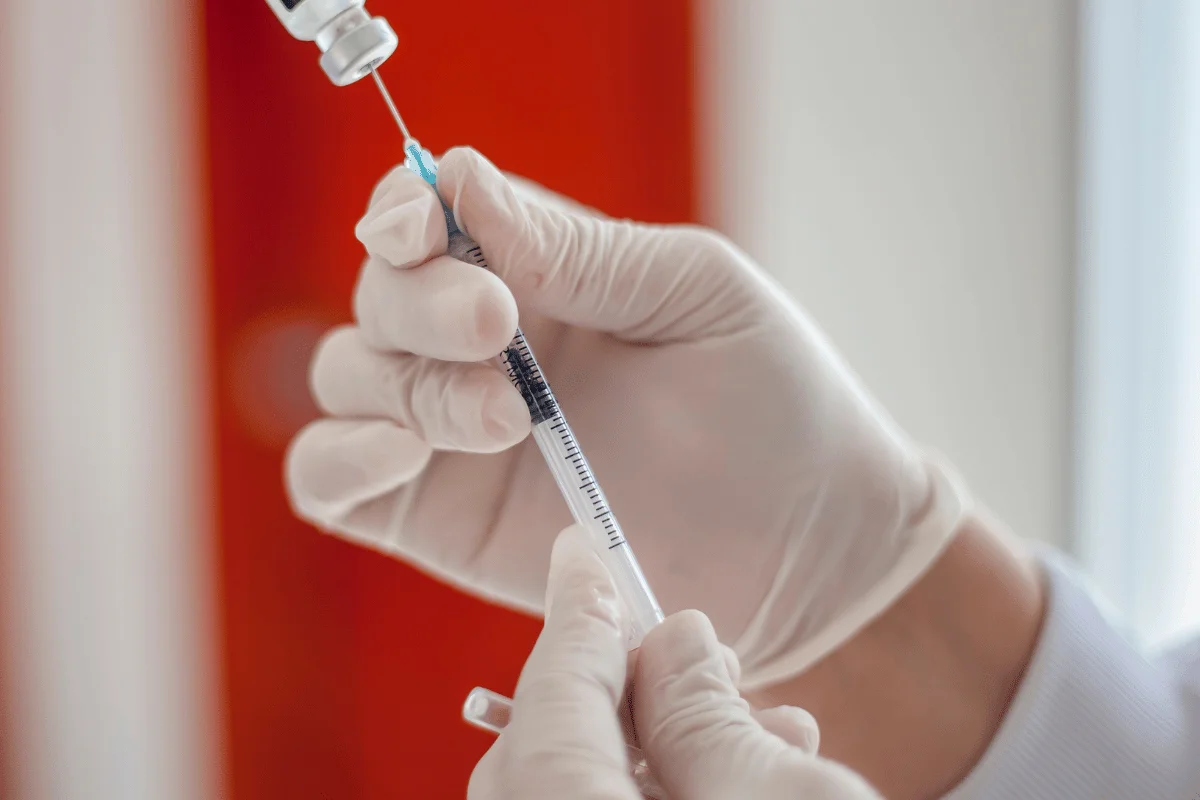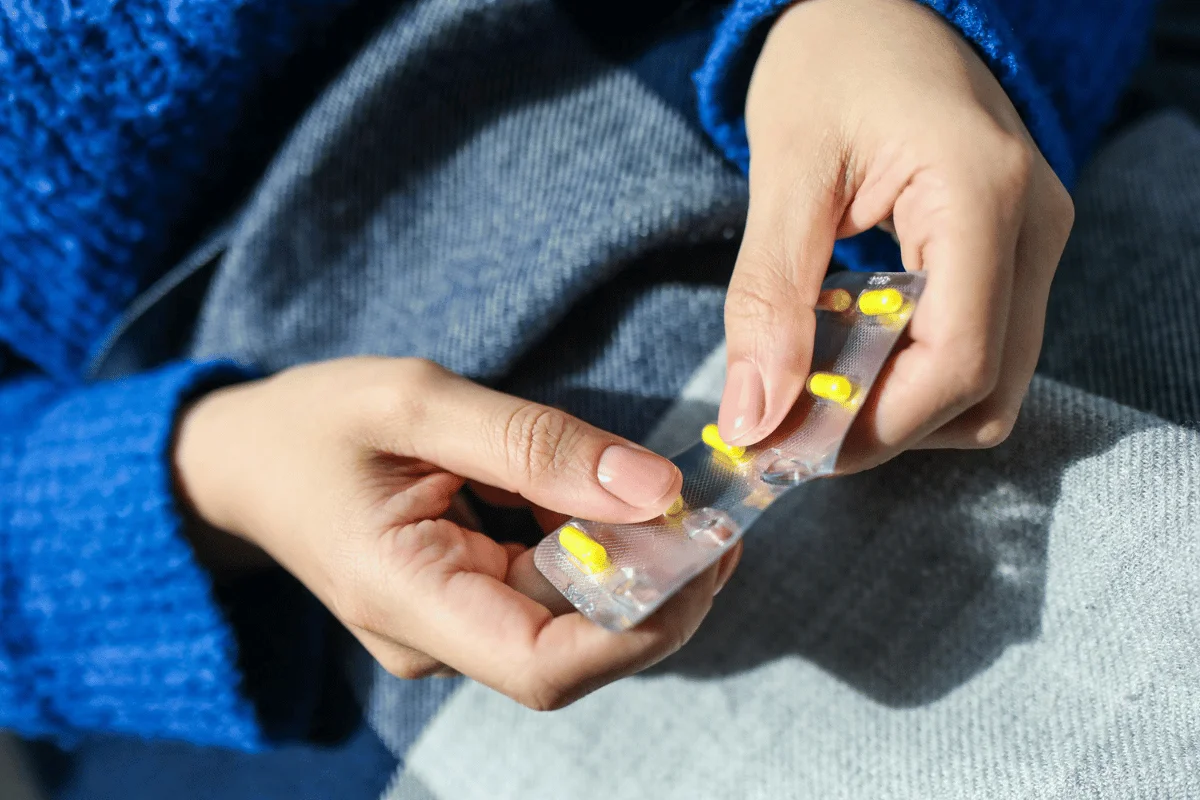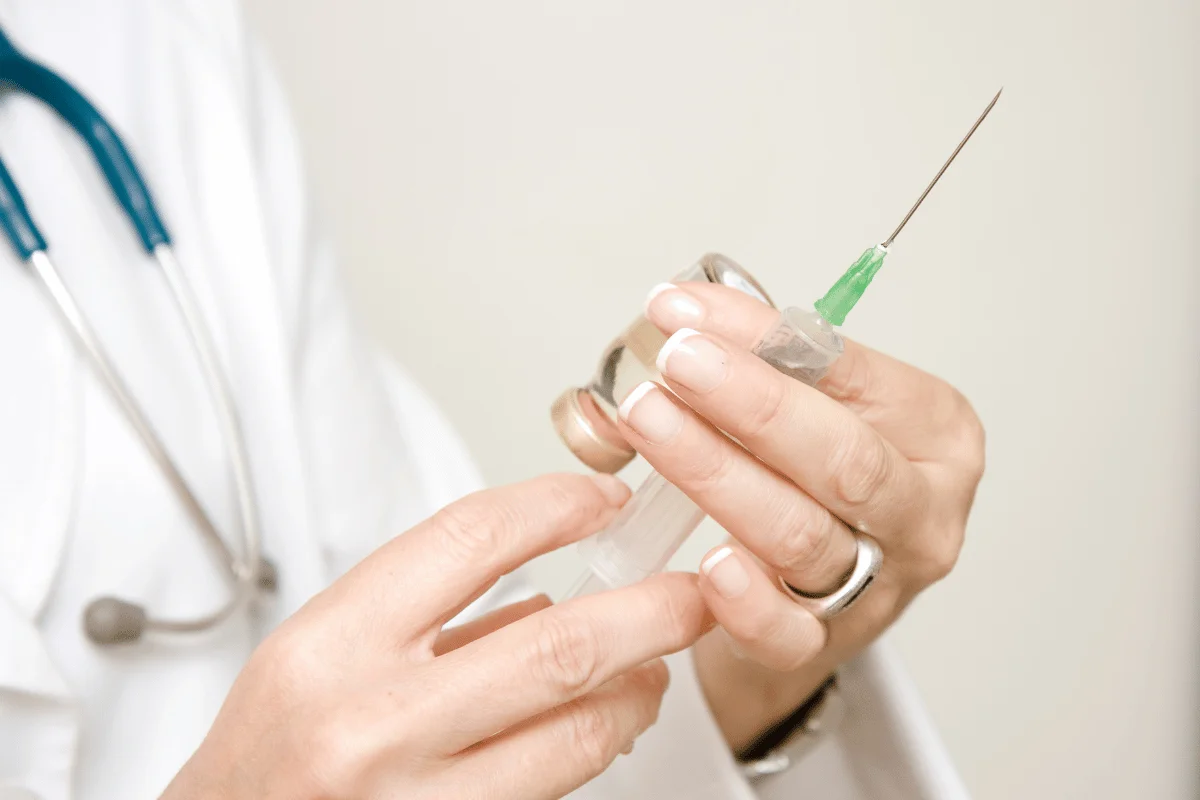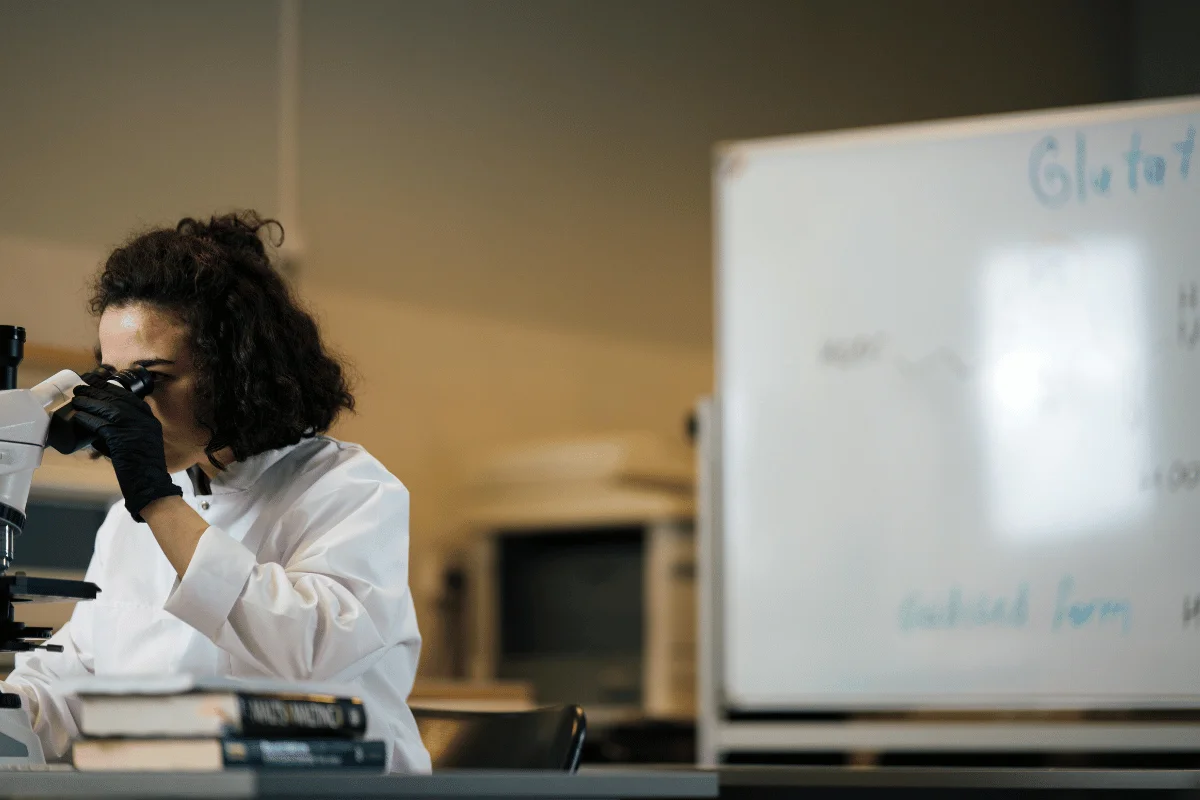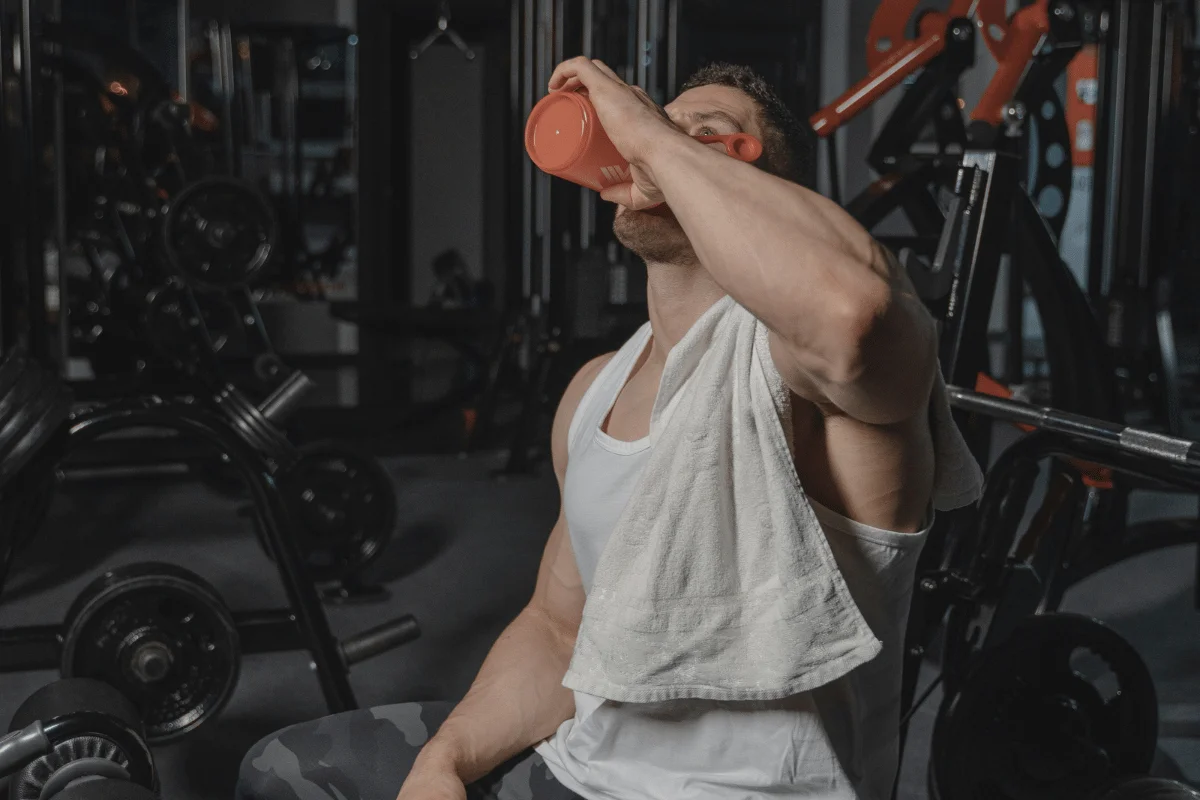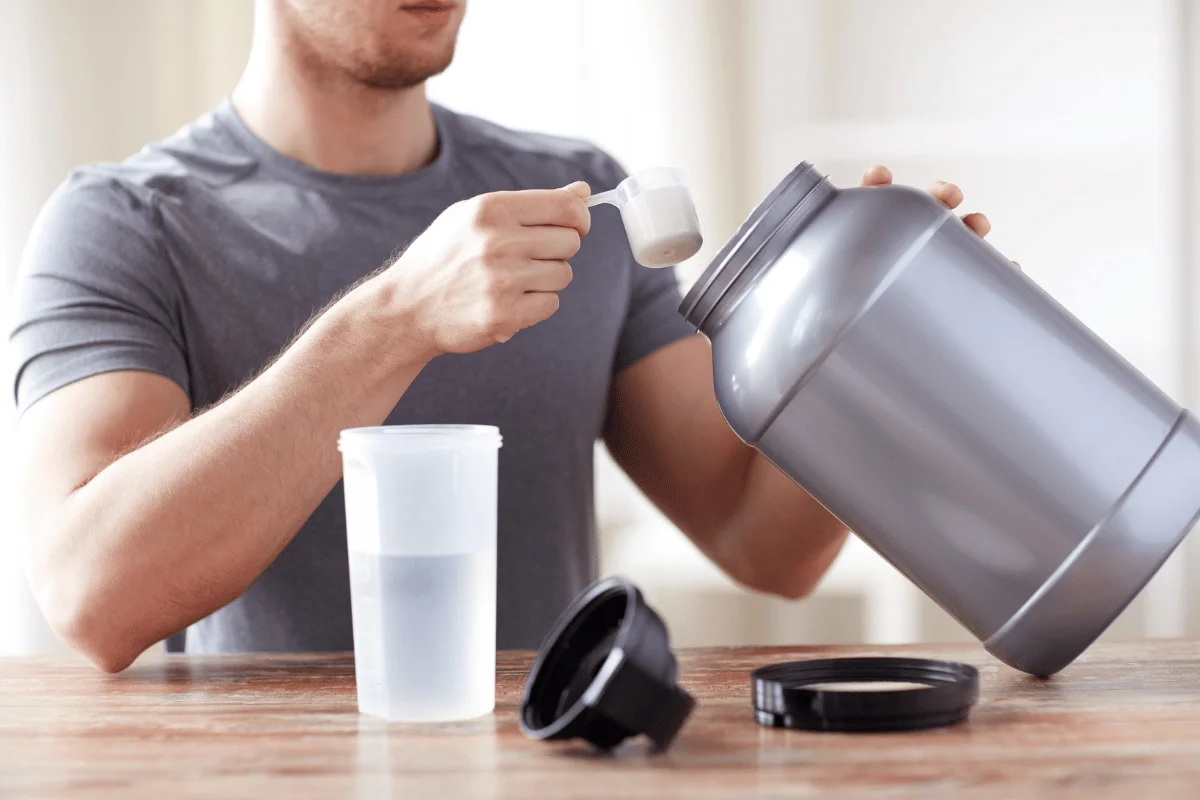[Disclaimer: This article is for informational purposes only. Before beginning any peptide therapy or supplementation routine, you should consult a medical professional.]
BPC-157 is a unique synthetic peptide gaining traction for its exceptional healing and tissue repair capabilities. It is derived from a protective protein found naturally in human gastric juice.
Comprised of just 15 amino acids, studies show BPC-157 (a Stable Gastric Pentadecapeptide) can help accelerate your injury recovery, counter inflammation, and provide protective benefits for your organs like the stomach, intestine, liver, and heart.
With ongoing research highlighting BPC-157’s therapeutic potential, you may be interested in understanding the optimal dosage guidelines for better results.
In this article, we will break down key dosage considerations for both men and women who want to use BPC-157 to improve their well-being.
TL;DR – BPC-157 Dosage Amount
The optimal BPC-157 dosage depends on factors like:
- Route of administration (injection vs oral)
- Gender (men often need higher doses than women)
- Intended use (therapeutic healing, bodybuilding, etc.)
- Individual variation in responses
There are also dosage guidelines for using BPC-157 to promote healing and recovery from:
- Injuries
- Digestive issues
- Painful conditions like arthritis, tendonitis, back pain
- Nerve damage
- Building muscle and enhancing athletic performance
[Important Note: Dosing insights come largely from animal studies and anecdotal reports. Larger-scale human research is still needed to confirm safe and effective doses.]
What Makes BPC-157 Stand Out Among Peptides?
In preliminary evaluations, BPC-157 indicates high tolerability up to relatively high doses in animal models. What sets it apart is its stability and versatility.
When you take most peptides by mouth, your stomach acid quickly breaks them down – like how meat starts breaking down when you digest it.
According to a 2021 review in Frontiers in Pharmacology, BPC-157 has the notable characteristic of remaining stable in human gastric juice for more than 24 hours, unlike many other peptides. Quick breakdown and longer stability could mean quicker, longer-lasting effects in the body.
Some other key distinguishing features backed by research:
- Helps Your Body Repair Itself: BPC-157 helps your collagen-forming cells rebuild damaged tissues, such as tendons (which connect muscle to bone), muscles, ligaments (which connect bone to bone), or even bones themselves.
- Helps Build New Blood Vessels: BPC-157 boosts special proteins in your body (especially one called VEGF) that help create new tiny blood vessels. This is important because these vessels deliver oxygen and nutrients to your injured areas.
- Protects Your Digestive System: If you have stomach or intestinal issues like ulcers or inflammation (when tissues get red, swollen, and painful), studies suggest BPC-157 might help heal these better than many common medications.
- Shields Your Important Organs: The same study shows that BPC-157 might act like a bodyguard for your vital organs—the skin, liver, pancreas, heart, and brain. It protects them from harmful substances and unstable molecules called free radicals (think of these as cellular rust).
- May Help with Pain: Research hints that BPC-157 might naturally help calm down pain signals in your body when tissues are hurt, though we need more human studies to be sure.
- Flexible Ways to Take It: Unlike many similar compounds that are picky about how they need to be taken, you might be able to use BPC-157 in different ways—swallow it, apply it through your nose, or inject it. Each method appears to work, though we’re still learning which works best for different conditions.
Note: Most studies have been done in laboratories and animals; we need more human clinical trials to fully understand how BPC-157 works in humans.
BPC-157 Dosage Guidelines
Since BPC-157 is still being researched, doctors don’t have official guidelines on exactly how much you should take.
What we do know comes from three types of research:
- Studies where they gave it to people (though there aren’t many of these yet)
- Tests on animals (there are quite a few of these)
- Laboratory experiments where they tested it on cells in dishes
These help us make educated guesses about what might be safe and effective for people:
BPC-157 Injection Dosage
BPC-157 for injection usually comes as a freeze-dried powder (lyophilized). However, you can’t use it like this—you need to mix it with special sterile water first.
This isn’t just any water—it contains a small amount (0.9%) of benzyl alcohol, which acts as a natural preservative to keep bacteria from growing in your solution.
Once you mix it up, you’ll need to keep it in your fridge (between 35-46°F), where it should stay good for about 4 weeks.
Most of what we know about BPC-157 dosing comes from studies on rats and mice. Looking at the Klicek study, they used doses of 10 micrograms per kilogram of body weight daily in rats.
However, converting animal doses to human doses requires careful calculation using allometric scaling.
Here’s how we calculate the human equivalent dose (HED) using the Nair formula:
HED (mg/kg) = Animal dose (mg/kg) × (Animal Km / Human Km)
Where:
- Rat Km factor = 6
- Human Km factor = 37
So for BPC-157:
10 μg/kg in rats = 0.01 mg/kg
HED = 0.01 mg/kg × (6/37) = 0.00162 mg/kg = 1.62 μg/kg
Therefore:
- A rat dose of 10 micrograms per kilogram
- Converts to 1.62 micrograms per kilogram for humans
- For a 90kg (200 pounds) person, this would be: 1.62 μg/kg × 90 kg = 146 micrograms total
In the animal studies, they gave BPC-157 for more than two weeks and didn’t see any major problems.
However (and this is important), just because something is safe in rats doesn’t automatically mean it’s safe for people – we need more human research to be sure.
[Note: This calculation uses the body surface area normalization method described by Nair et al., which accounts for metabolic differences between species.]
BPC-157 Oral Dosage
Research in animals shows that BPC-157 might work even when you swallow it, like in capsule form.
A clinical trial in Mexico (registered on ClinicalTrials.gov in 2015) studied oral BPC-157 tablets.
In this trial, they used much higher doses than we see in animal studies—they tested 1 mg (1000 microgram) tablets, with some taking up to 6 tablets at once and later taking 3 tablets three times daily for two weeks.
Note: In animal studies, scientists typically use about 10 micrograms per kilogram of body weight, whether injected or given by mouth.
We still need more research to determine whether these amounts are safe and if they actually work in humans. The results from that 2015 clinical trial haven’t been published yet, so we’re still waiting to learn more about how it works in people.
While we don’t have official guidelines yet, people who’ve tried BPC-157 (remember, this is just personal experience, not scientific evidence) often report using about 250 micrograms in capsule form, sometimes taking it 1-3 times per day.
This is much lower than what was tested in that clinical trial!
BPC-157 Dosage for Men
Let us help you understand the potential dosing for men based on typical male weights (170-200 lbs).
From animal studies and using the Nair conversion formula for a 185 lb (84 kg) man:
- Low Dose: ~135 micrograms per day
- Standard Dose: ~250 micrograms per day
- High Dose: ~500 micrograms per day
Activity level adjustments:
- Sedentary: The lower end of the range
- Moderately Active: Mid-range
- Athletes: Upper range
- Professional athletes may require maximum doses
BPC-157 Dosage for Women
For women, based on typical female weights (130-160 lbs), here are the calculated doses:
For a 145 lb (66 kg) woman:
- Low Dose: ~106 micrograms per day
- Standard Dose: ~200 micrograms per day
- High Dose: ~400 micrograms per day
Optimal Dosage Based on Use Cases
While the above guidelines provide a rough starting point for BPC-157 dosing, requirements may vary based on the specific therapeutic goals and health statuses involved:
BPC-157 Dosage for Bodybuilding
Research from the Molecules journal demonstrates BPC-157’s effectiveness in muscle recovery and growth:
Directly injecting the dose in areas like muscle bellies, tendons, or inflamed joints may offer bodybuilders, CrossFitters, and other strength/physique athletes an acceleration in injury healing and training recovery.
Training-Specific Protocol:
- Pre-workout: 250 mcg (2 hours before)
- Post-workout: 250 mcg
- Rest days: 300-400 mcg total
- Cycle length: 8-12 weeks
Stack Considerations:
- Solo use: 500 mcg daily
- With TB-500: 300 mcg BPC-157 + 2mg TB-500 weekly
- With GH peptides: Reduce dose by 20%
BPC-157 for Muscle Growth
While not directly anabolic, BPC-157 supports muscle growth through enhanced recovery and repair.
Dosing Protocol:
- Training days: 500-600 mcg split dose
- Rest days: 300-400 mcg
- Pre-sleep dose: 200-300 mcg
- Morning dose: 200-300 mcg
- Duration: 8-12 weeks
- Best timing: Within 30 minutes post-workout
BPC-157 for Weight Loss
Although not a fat burner per se, BPC-157 at oral doses (as specified above) could amplify weight loss efforts by reducing gut inflammation, improving digestion, and enhancing metabolism.
Dosing Protocol:
- Starting dose: 200-300 mcg daily
- Maximum dose: 500 mcg daily
- Frequency: 2-3 times daily
- Method: Oral administration preferred
- Timing: Morning and evening, preferably on an empty stomach
- Duration: 6-8 weeks with 2-week break
Bpc-157 for Gut Health
Some research suggests that BPC-157 might help when your gut isn’t happy (like with a leaky gut or IBS).
The dosages we discussed earlier would apply. Oral capsules might work especially well for gut issues since they go directly where needed.
Dosing Protocol:
- Acute conditions: 600-800 mcg daily
- Preventive: 200-300 mcg daily
- Method: Oral capsules preferred
- Timing: 30 minutes before meals
- Duration: 4-8 weeks minimum
BPC-157 for Tendonitis
If you’ve got stubborn tendon pain that won’t go away, BPC-157 might help.
We prefer injecting it (according to the abovementioned guidelines) near the hurting tendon to target the problem spot directly.
Dosing Protocol:
- Initial phase: 250 mcg twice daily
- Location: Inject near affected tendon
- Maintenance: 250 mcg daily
- Frequency: Morning and evening doses
BPC-157 for Arthritis
When arthritis hurts your joints, BPC-157 might help rebuild cartilage (the cushiony stuff in your joints) and reduce swelling.
Dosing Protocol:
- Standard dose: 250-400 mcg daily
- Frequency: Split into 2 doses
- Duration: 8-12 weeks
- Method: Local injection near affected joints
BPC-157 for Plantar Fasciitis
BPC-157 might be able to help with foot pain.
Dosing Protocol:
- Acute phase: 300-500 mcg daily
- Method: Local injection or oral
- Frequency: Split into 2 doses
- Duration: 4-8 weeks
- Optional: Combine both methods (250 mcg each)
- Timing: Morning and evening administration
BPC-157 for Nerve Damage
If you’re dealing with nerve pain (maybe from diabetes or after chemotherapy), studies suggest BPC-157 might help your nerves heal.
Dosing Protocol:
- Starting dose: 400-600 mcg daily
- Split into: Two doses (morning/evening)
- Duration: 8-12 weeks minimum
- Method: Inject along the nerve pathway
BPC-157 for Injury
Whatever the injury type – from torn muscles and stress fractures to surgical wounds – injection protocols around the injury site show healing acceleration in research.
Dosing Protocol:
- Acute injuries: 500-700 mcg daily
- Chronic injuries: 300-500 mcg daily
- Frequency: Split into 2 doses
- Duration: Until healed (4-8 weeks typical)
- Location: Direct injection around the injury site
- Systemic support: Optional 250 mcg oral dose
[Important Note: This is all based on research studies (mostly in animals), and we still need more human studies to be sure how well it works. Always talk to your healthcare provider before trying any new treatment!]
TB-500 and BPC-157 Blend Dosage
BPC-157 is often paired with another helpful compound, TB-500.
TB-500 is a lab-made version of something your body makes naturally – a protein called thymosin beta-4.
It helps your body in several important ways:
- Helps calm down swelling and inflammation
- Helps create new blood vessels (called “angiogenesis”)
- Supports your immune system (your body’s natural defense system)
- Helps wounds heal faster
BPC-157 and TB-500 might work even better together. When researchers make these blends, they usually mix them in different ratios—sometimes equal amounts of each, sometimes up to five times more TB-500 than BPC-157.
Researchers have seen that TB-500 might work at doses starting from about 0.5 micrograms per kilogram of body weight, though some studies have used much more.
For example, if you weigh 200 pounds (about 91 kg), some people report using between 1 and 2 milligrams (that’s 10 to 20 micrograms per kilogram).
If you’re just starting to research these compounds together, try a 1:1 mix at a lower dose – about 0.5 micrograms per kilogram of each compound daily as a starting point.
[Note: Most of our knowledge about these combinations comes from lab research and personal reports, not large human studies. We need more research to understand how they work together and the best doses.]
Do You Need a Prescription for BPC-157?
According to the U.S. Anti-Doping Agency (USADA) documentation from 2023, there’s actually no legal basis for selling BPC-157 as a drug, food, or dietary supplement in the USA.
The FDA has even confirmed that compounding pharmacies can’t legally use it in their medications.
However, here’s what’s interesting about the current situation:
- It’s being included in some wellness and anti-aging treatments, though not legally.
- It’s considered an “experimental compound” or “research peptide.”
- You might see it labeled as “for research purposes only.”
If you’re thinking about using BPC-157, you should know:
- Laws can vary significantly between different countries and regions.
- Some places in Asia and Australia have stricter regulations.
- You should always check your local laws before considering any peptide purchases.
Most importantly – and we can’t stress this enough – even though you might see it for sale, that doesn’t mean it’s approved or regulated for human use.
The FDA hasn’t approved it, and there’s minimal human research on its safety or effectiveness.
[Note: BPC-157 is classified under the S0 Unapproved Substances category by the World Anti-Doping Agency).]
Frequently Asked Questions (FAQs)
Let’s answer some common questions about BPC-157 dosing that often come up:
How Long is BPC-157 Good For?
With proper refrigerated storage, dry powder BPC-157 can last 12-24 months before degradation starts.
However, once mixed into solutions with bacteriostatic water, the ideal use life shortens to a maximum of 1 month.
How Quickly Does BPC-157 Peptide Start Working?
Users often report subtly faster healing within 1-2 weeks of daily administration. By 4 weeks, more obvious injury recovery acceleration is apparent. Full repair of badly damaged tissues may take 6-12 weeks, depending on severity.
What Are the Signs That BPC-157 Dose Is Too High?
Since clinical safety data in humans remains sparse, signs of overdosing are hard to characterize. However, animal studies used massive doses that far exceeded common ranges without issues.
Unless doses exceeding 1000 mcg per injection or 1500 mcg oral are used, toxicity seems extremely unlikely.
Conclusion – BPC-157 Peptide Dosage
Finding the right BPC-157 dosage requires fine-tuning based on what you want to achieve and how your body responds. The dosage should match your intended use, whether taking it orally or by injection.
BPC-157’s healing abilities mean dialing in an optimal personal dose can pay off if you have injuries, swelling, or tissue damage impacting your life.
As researchers better appreciate how BPC-157 could help patients beyond current medical treatments, it’s wise to follow the dosage guidelines as more human trials happen.
Though not yet an exact science, peptides like BPC-157 put more power in your hands to tackle health issues and meet fitness aims that we used to think impossible.


